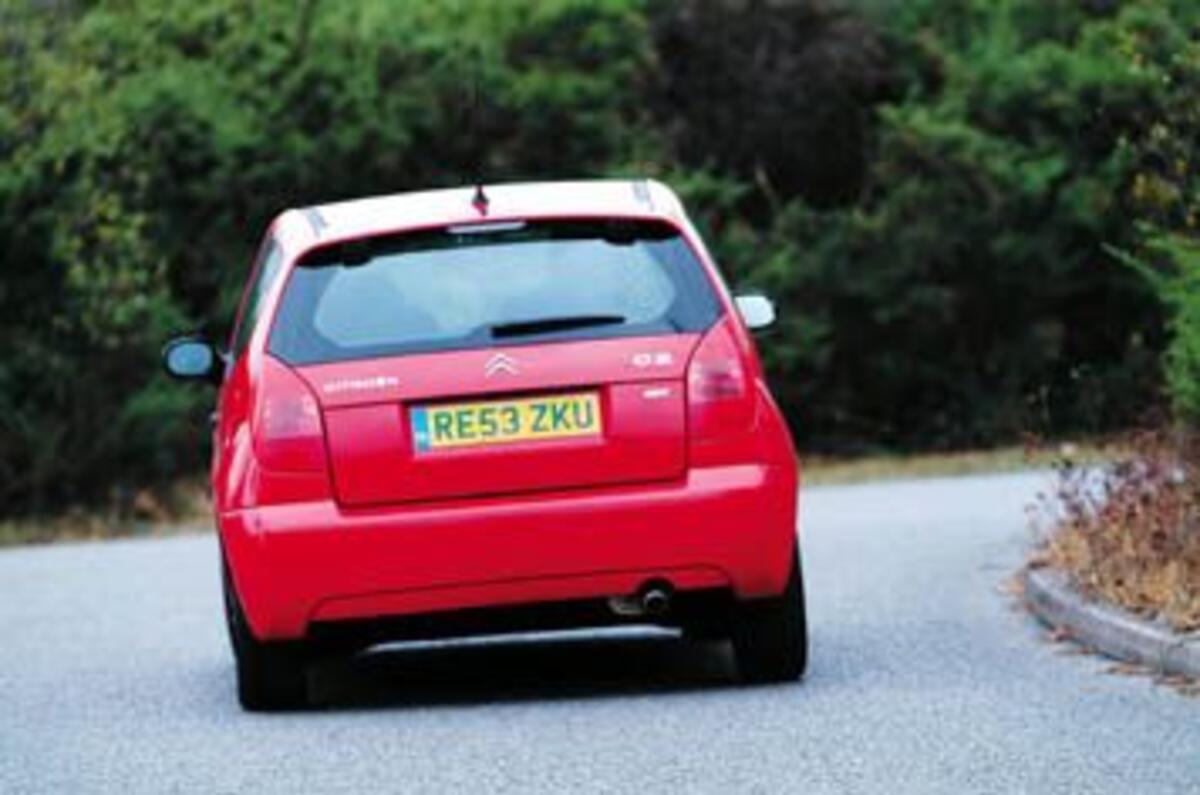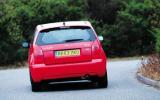It’s a simple formula: chuck out luxury items to reduce weight; construct around the raison d’être of motor sport homologation; fettle mechanically; fit white wheels and/or rally graphics; and then charge less.
So here we go: lose 28kg (no electric mirrors, can of puncture mousse in place of wheel, no fog lights, smaller windscreen wash bottle, etc); unique front bodywork for the rally car quest, and a 2500-unit limited production; a manual gearbox that helps shave 1.4sec on the VTR’s 0-60mph time; white wheels and WRC red paint; all for £10,495 - a £500 saving over the VTR.
In the past, such PSA group tweakery has given us the legendary 1300cc 106 Rallye and 306 Rallye. And remember - white wheels are what Stefan Roser’s white socks are to 911 anoraks. It’s a small detail - the uninitiated will question your taste - but understanding proves you’re on the right wavelength.
The C2 VTR isn’t the most promising of starting points. Although it brought massive improvements in comfort, safety and ergonomics over the Saxo - all areas where that car was particularly weak - driver satisfaction nestled somewhere between translucent door handles and load-bearing tailgate on the job list, and nothing illustrated that more than the standard-fit Sensodrive transmission.
Mercifully, the GT’s manual ’box reinstates the terrier-like character that’s vital in a car such as this - as a glance at the performance figures proves - despite a sloppy change and a lever too short for tall drivers.
The 16v TU5J engine in the new C2 VTR/GT has been detuned to 110bhp from its Saxo VTS days; seasoned VTS pilots will know how fizzy the old 120bhp twin-cam can be and appreciate its tuning potential. Although the old 8v VTR engine may have struggled at the top end, it delivered decent pulling power throughout the rev range, something that was never the 16v lump’s forte. In the C2 you’ve got 1000rpm less to play with and 50kg more weight to lug about.
Predictably, the GT initially slouches, responds poorly to the throttle and easily runs into the limiter - though admittedly our test car was tight, with only 400 miles on the clock. There’s also a pronounced flywheel effect, which feels ECU-related, and the engine sounds strained, but the GT’s bluntness feels like nothing a new chip and a free-flow air filter wouldn’t sort.
Although Citroën claims there have been no changes to the chassis, the GT has a more positive feel than the VTR. That car’s thin, hard leather steering wheel has been replaced by a thick-rimmed item with deep grip cut-outs, sourced, strangely, from the base Pluriel.
Cheap plastic it might be, but it allows you to get a much more confidence-inspiring purchase over the C2’s direction. A small change - a big difference. It rides firmly, rolling very little for a tall car, and grips impressively, although there’s less adjustability than in the old Saxo. What still lets it down is the electric power steering, which offers frustratingly little feedback, despite reassuring weight at speed.
The C2 GT is a substantial step in the right direction after the disappointing VTR, and for hot-hatch fans everywhere, that can only be a good thing. The basics are great, now we just need a bit more of the old Saxo magic.











Add your comment